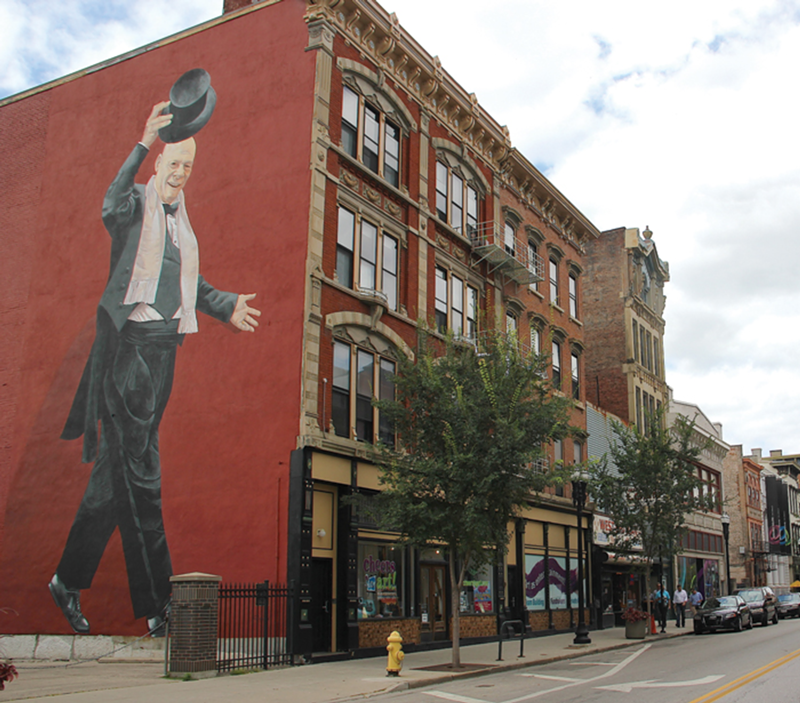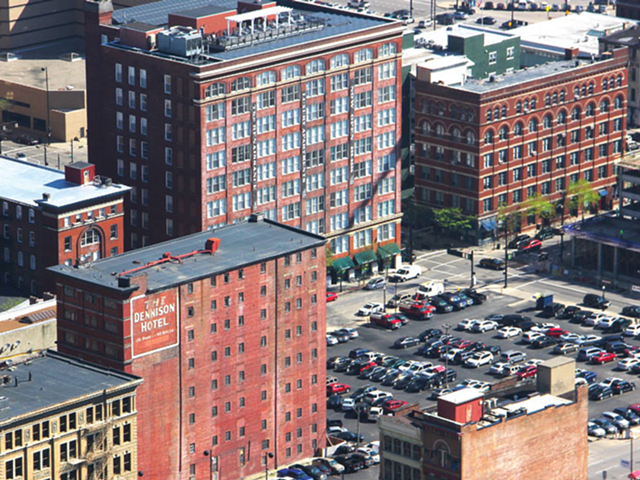Over-the-Rhine will see improvements on 300 units of affordable housing, many as part of mixed-income developments, according to a new plan.
The effort by Model Group, 3CDC and Over the Rhine Community Housing would rehabilitate affordable housing at eight sites, many under contracts with the Department of Housing and Urban Development. The city could chip in $2 million in funding for that project if Mayor John Cranley’s budget proposal is approved. The city money would go toward a $135 million effort by developers to turn those sites into 304 units of high-quality affordable housing along with 212 market rate units at four of the sites.
Cranley, Vice Mayor David Mann, representatives from Over-the-Rhine Community Housing and developers Model Group and the Cincinnati Center City Development Corporation unveiled the proposal today at a news conference outside 1525 Race St., which would see 25 units of affordable housing developed by Model along with 85 market rate units.
“We’re very excited to be here today to celebrate affordable housing and a diverse community in Over-the-Rhine,” said Over-the-Rhine Community Executive Director Mary Burke Rivers. “People who are working in our city, or retired, or veterans, can’t afford what the market provides for housing. It’s gotten very complicated, but at its core it’s a simple math problem. This money addresses that math problem.”
The developments are designed to help the slide in affordable housing the neighborhood has seen in the past decade, Cranley says. Since 2000, 73 percent of OTR’s lowest-cost housing units have left the neighborhood, according to a study by Xavier’s Community Building Institute. That's caused some displacement of residents.
“We’ve seen here in Over-the-Rhine an extraordinary renaissance that was unthinkable five or 10 years ago,” Cranley said at the news conference. “But I think we all believe it should not come at the expense of the people who have lived here a long time. There have always been HUD contracts that have been extended for 15 or 30 years to preserve affordable housing. But it’s not enough, and we’d like to do more. We want to adjust to changing circumstances. We want a healthy community that is mixed income. I think this is a tremendous opportunity to do that.”
Cranley says the financing is general fund money coming from the city’s sale of the Blue Ash Airport and refinancing of some streetcar expenses. Another $2 million would be dedicated to affordable housing elsewhere in the city if the budget plan goes forward.
Model Group CEO Bobby Maly says affordable housing and economic development can go hand and hand.
“Investing in affordable housing can also be investing in economic development and revitalization. That means investing in high-quality affordable housing alongside, adjacent to, high-quality market rate housing. It also means investing in affordable housing next to high-investment community projects. Things like Washington Park and other public investments.”
A focus on mixed-income development is the very deliberate focus of the proposal, Mann says.
“It’s no accident that we’re here,” Mann said about the site of the news announcement, a series of empty buildings on Race Street. “Next door, new, market rate condos are being built. As I understand from (3CDC CEO) Mr. (Steve) Leeper, they’ll be $300,000 and up. Here, because of the affordable housing money that the budget will commit to Over-the-Rhine, there will be about 25 renovated units of affordable housing.”
Mann cited statistics that 50 percent of renters in Cincinnati pay more than 30 percent of their incomes for apartments, the threshold for affordability set by the federal government.
“We hope there are ways that the $2 million can be leveraged,” Mann said, to create more opportunities for affordable housing creation. The other $2 million will be dispersed to developers doing low-income housing projects in other parts of the city through an as-yet-to-be-determined process.
The plan would, in some cases, move affordable units to other buildings and create market rate or mixed-income developments in their place.
Among the sites involved in the OTR plan are the Jan and Senate Apartments, six buildings containing 101 units of subsidized housing, and the so-called Mercy portfolio, which includes 140 units in 18 buildings in OTR for people making less than 60 percent of the area median income — about $71,000 for a family of four. About 70 of those units are in bad shape, developers say, while another 70 need only minor work.
Developers say the Jan and Senate properties are in danger of losing their rental subsidies due to their poor condition and have begun managing the sites and moving tenants to other, nearby affordable units with the help of the Cincinnati Legal Aid Society ahead of rehab work. The HUD contracts held by the Jan and Senate buildings would then be transferred to a number of other affordable housing sites, 3CDC and Model Group say in an outline of their plan provided by city officials. About 45 units of housing at 60 percent of the area median income will stay at the Jan and Senate as part of a mixed-income development.






